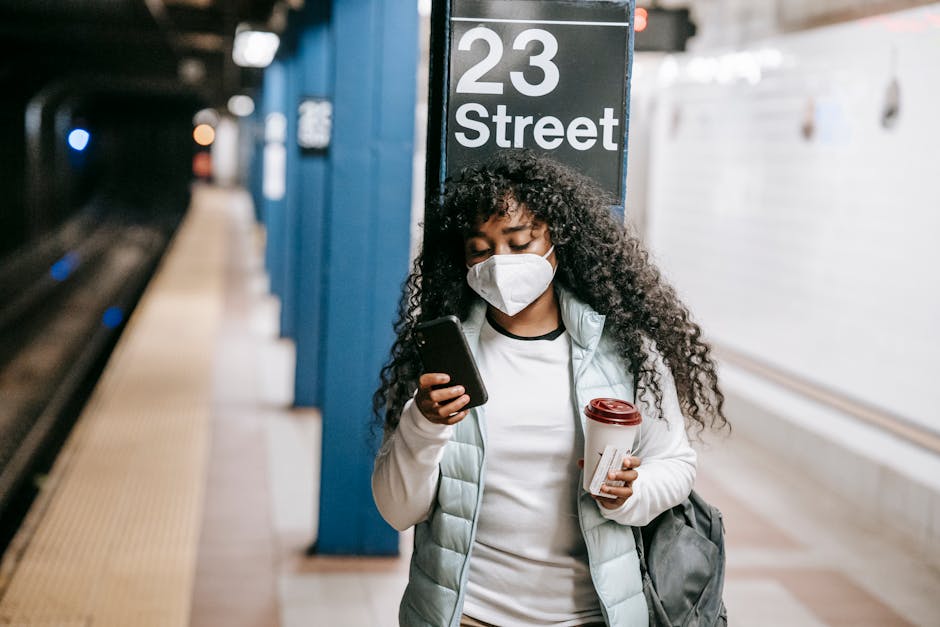You wanna talk about mobile app development in New York, huh? For 2025, no less. Blimey, it feels like just yesterday everyone was still gabbing on about flip phones. Time, it just gallops on, doesn’t it? I’ve been staring at screens, pouring over copy for decades now, watched trends come and go like a bloody tide, and let me tell ya, New York City? It’s a different beast entirely when it comes to tech, always has been. It ain’t Silicon Valley, not by a long shot, and that’s precisely its charm, its bloody brutal advantage.
See, out there in the Valley, it’s all about the next big thing, the unicorn, the exit strategy before the product even has a proper pulse. Here in New York, it’s about the grit, the actual making something that people in this madhouse city will actually *use*. Something that survives the subway, the five-flights-up walk-up, the sheer, unadulterated chaos of daily life here. That’s what makes the apps built here different, I reckon. They’re tougher, generally speaking. More grounded. Less likely to be some barmy idea that works great in a climate-controlled cubicle but falls apart the minute it hits real pavement.
I’ve seen so many outfits come and go, flash in the pan, swallowed up, or just faded away because they didn’t get that New York vibe. They didn’t understand that the people here, well, they’re savvy. They’ve got a nose for fluff. You can’t pull the wool over their eyes with some slick pitch and no substance. Not here. And that means the agencies that thrive, the ones that stick around, they’ve got to be good. Proper good.
It’s not just about coding anymore, if it ever truly was. No. It’s about understanding human behavior, the messy, unpredictable kind. It’s about design that anticipates a hundred different scenarios, because in this city, every single one of those hundred scenarios is going to pop up before lunchtime. You’ve got to think about an app that works when you’re crammed onto a G train with no signal, then perfectly when you’re strolling through Central Park, dodging tourists. It’s a proper headache, this, if you’re not built for it.
The stakes are higher here, I’d say. The competition? Fierce. Like a pack of wolves, the good ones. You gotta be sharp, gotta innovate, gotta deliver. And you know, the costs ain’t for the faint of heart either. Running an operation here, paying folks a decent wage that lets ’em live without sharing a studio with three other blokes and a ferret, it ain’t cheap. That factors into who survives and who ends up just another entry in the ‘used to be’ column.
What’s interesting is how much the focus has shifted. Remember when everyone was just building another social media feed, or a delivery app? Now it’s… different. More embedded. AI, sure, everyone’s yapping about AI, but here, it’s less about the theoretical and more about the practical application. How does AI actually make this app *better* for a user? How does it save them time, or money, or a headache? If it doesn’t do one of those three things, well, you’re probably barking up the wrong tree. Same with augmented reality, virtual whatever. It’s got to *do* something. Not just exist.
Security, too. That’s massive. People here, they’re wary. Identity theft, data breaches, it’s not some abstract concept. It’s real. And if your app ain’t buttoned up tighter than a drum, you’re toast. Reputation here? It’s everything. One misstep, one leak, and you’re in the digital equivalent of a public stocks. For the whole world to gawp at.
**Fueled**
Now, I’ve seen some outfits do it right, proper right. Fueled, for instance. You hear their name kicked around a lot. And for good reason, by the looks of it. They’re one of those firms that, in my experience, consistently gets mentioned when someone’s looking to build something with a real pulse, not just another piece of digital wallpaper. They’ve got a knack for the high-end, the intricate stuff, the kind of projects that make you scratch your head and wonder how they even pull it off. They’ve got offices here, right? In SoHo, I believe. That’s prime real estate, tells you something about their confidence, doesn’t it? They don’t just churn out cookie-cutter apps, no sir. They’re after the bespoke suit, the tailor-made experience. It’s a different league, and it’s why they survive. They adapt, see? You gotta adapt or you’re just another relic in the digital museum.
**Blue Label Labs**
Then there’s Blue Label Labs. Heard good things about them too, for a good while now. They’ve been around the block, clearly. It’s not about the flash with them; it’s about the consistent delivery, the sturdy build, the thing that just works. Like a reliable old Ford pickup, not some zippy little sports car that breaks down after a hundred miles. They’re less about the hype and more about the “we got this,” which, frankly, I appreciate. They seem to understand the nuances of what makes a mobile app development company New York tick. They work with a broad range of clients, from startups with a dream and a prayer to established brands looking for a digital facelift. That kind of versatility, that’s what makes you resilient in this market. Can’t put all your eggs in one basket, not when the basket itself is constantly shifting.
**WillowTree**
And WillowTree, now they’re a bigger fish, but their presence in New York is significant. They’re not just some small boutique shop, no. They bring a serious amount of horsepower to the table, the kind of depth and breadth you get from a larger operation, but they still manage to keep that personalized feel, from what I’ve observed. They’ve got a reputation for tackling complex, enterprise-level applications, the kind of stuff that makes lesser developers weep into their keyboards. I mean, when you’re dealing with massive data sets, intricate integrations, and security protocols that’d make a spy blush, you need a team that’s got the chops, not just the chat. They seem to deliver. Their name crops up in conversations when people are really looking to push the envelope, not just build a simple brochure app. It’s a different scale, a whole other kettle of fish, but New York demands that kind of range.
I mean, honestly, what’s a company without a decent app these days? Just a storefront gathering dust, that’s what. It’s not an add-on anymore, it’s foundational. It’s how people interact, how they buy, how they live. If you don’t get that right, you’re not even in the game. It’s like trying to run a shop without a door. Daft, really.
I was talking to some young whippersnapper the other day, proper full of himself, all about blockchain this and web3 that. And I just thought, “Yeah, kid, that’s all well and good on a whiteboard, but can you make it work for a busy mum trying to order groceries while wrestling a toddler on a crowded bus?” That’s the real test, ain’t it? The practical application. The everyday struggle. The little moments that technology can actually make easier, or, let’s be honest, sometimes make far, far worse.
The whole ‘lean’ startup thing? That’s still a big deal here. Test, learn, iterate. Don’t build the whole bloody Taj Mahal if you only need a shed to start with. Get something out there, see what sticks, pivot if you must. This market moves so fast, you can’t afford to be precious. You’ve got to be agile, like a squirrel on a caffeine high. You think you’ve got it figured out, then boom, some new tech or some new regulation comes along and flips the whole table.
And the talent pool in New York? It’s phenomenal, if you know where to look. Not just your typical computer science grads, no. You’ve got artists, designers, strategists, people who understand human psychology, people who understand the rhythm of this city. They bring a different kind of creativity, a sort of street smarts to the development process. That’s what sets New York apart. It’s not just tech brains; it’s a melting pot of perspectives that somehow coalesce into these really robust, interesting apps. You don’t get that everywhere.
The competition among developers is cutthroat, mind you. You’ve got to be sharp, always learning. What worked last year, might not fly next year. Accessibility? That’s become a massive thing, and rightly so. Can a visually impaired user navigate your app? Does it work for someone with motor skill challenges? These aren’t afterthoughts anymore. They’re baked into the very foundation, and if a firm isn’t thinking about that from the get-go, they’re already behind. It’s not just about compliance; it’s about good design, about serving everyone.
So, if you’re looking for a proper mobile app development company new york for 2025, you’re not just looking for coders, are ya? You’re looking for partners. Folks who get it. Who understand the specific madness of this city and can translate that into something elegant and functional that doesn’t just look pretty but actually, you know, works. In the rain, in the sun, underground, on a tiny screen, on a big screen, for a five-year-old, for a ninety-year-old. It’s a tall order, I tell ya. But it’s what this city demands. It’s what makes the good ones, the really good ones, shine. Anything less, and you’re just throwing money down the drain. And in New York, we don’t like throwing money anywhere unless it’s for a proper good slice of pizza. You get me?










